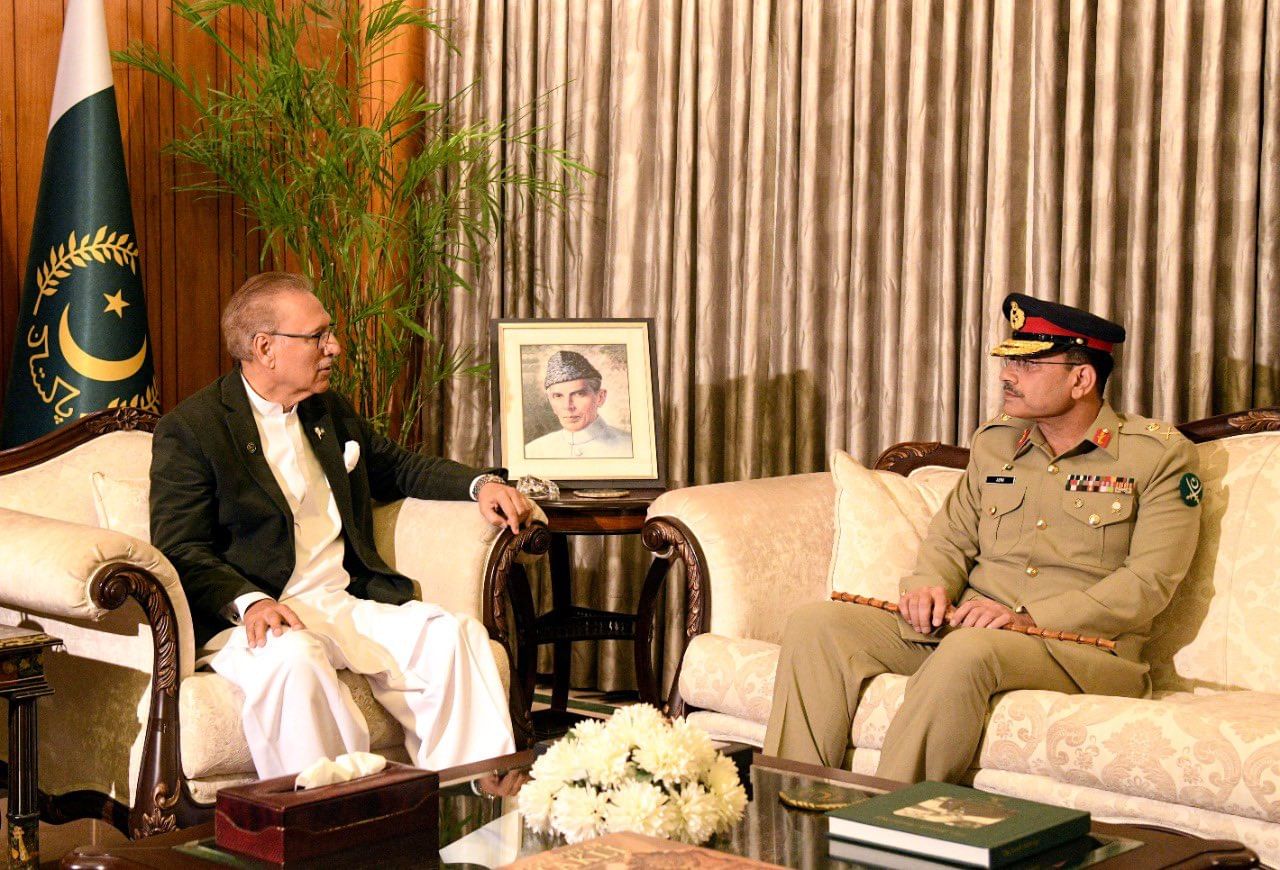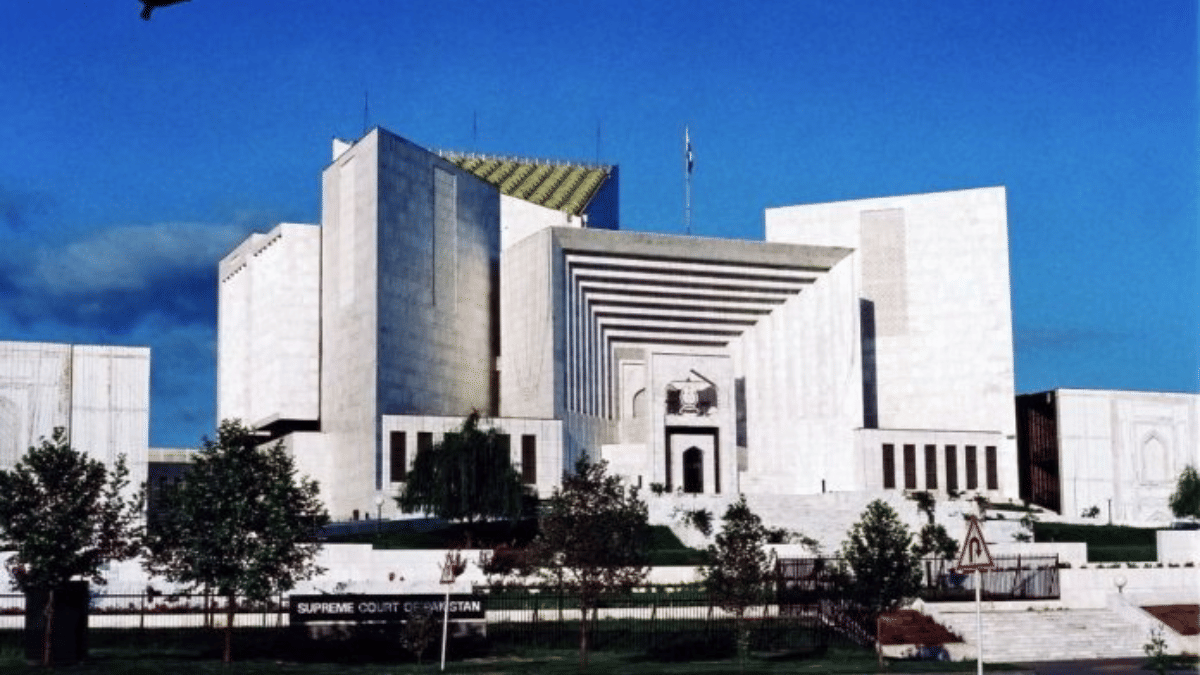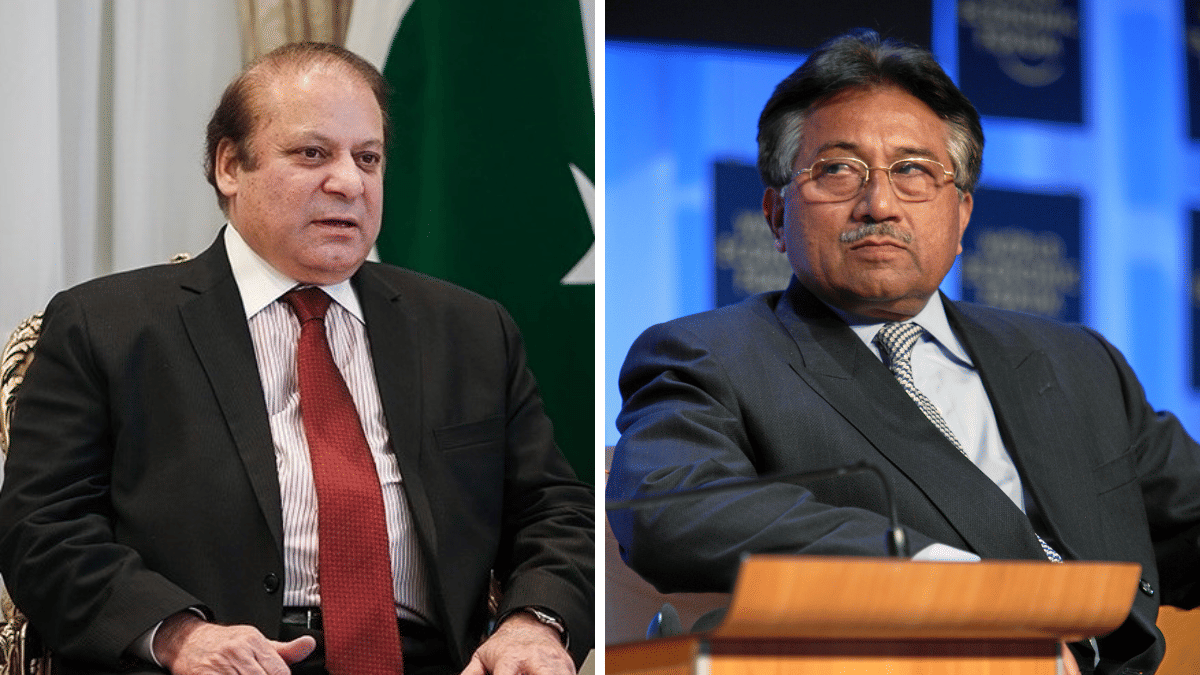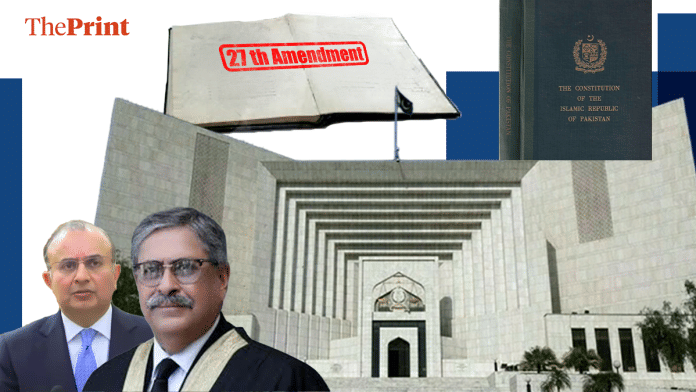Since Pakistan’s National Assembly passed the 27th Constitutional Amendment Bill—which makes Asim Munir a Field Marshal for life, the chief of all defence forces, including the Pakistan Navy & Air Force, and grants him President-like immunity from prosecution, while further reshaping the powers of the judiciary—two Supreme Court judges, Syed Mansoor Ali Shah and Athar Minallah, have resigned.
Justice Shams Mehmood Mirza of the Lahore High Court has also resigned. Two judges of the Islamabad High Court—Mohsin Akhtar Kayani and Saman Rafat Imtiaz—have indicated they might not serve further.
In this edition of ThePrint CutTheClutter, published on 13 November 2025, Editor-in-Chief Shekhar Gupta delves into how the 27th Amendment centralises power, changes executive-judiciary relations, and weakens Pakistan’s democracy.
Here is the full transcript.
How does the 27th Amendment change the material conditions on the ground for the people of Pakistan? Just as it almost formally puts Pakistan’s Navy and Air Force under the Army, it also makes Pakistan’s Executive and Parliament subordinate to the Army. At the same time, it further subordinates the Judiciary to the Executive.
That’s the most consequential change for the Pakistanis.
And that’s why we’ve seen some protests. Thinking people in Pakistan are talking about this, writing about this. I will share an article by Maleeha Lodhi. She is a former editor and ambassador. We’ve been fellow travelers as journalists. In fact, after Zia’s assassination, I wrote my cover story for India Today sitting in her office. She has written an article in Dawn, headlined Slide into Authoritarianism, where she says this.

She writes how the 27th Amendment shows Democratic regression. This sets up executive-compliant courts. Interesting expression, executive-compliant courts. And this finishes the job the 26th amendment had left incomplete. Now, what the 26th constitutional amendment does, we featured in Episode 1. There was a similar try then to push for changes within the judiciary. Munir could not fully have his way, though driven by the fear that some judge would one day free Imran Khan, because one after the other, he was being acquitted or discharged in the various cases against him. The army did not want him out.
Also Read: Pakistan’s constitutional amendment ‘can inspire Kim Jong Un,’ people say. Dark days ahead
27th Amendment reshapes judiciary
So first, with the 26th Amendment, they reduced the powers of the Supreme Court and the high courts. Then, the Army desired a Federal Constitutional Court, which would cut the Supreme Court in half. For the Supreme Court of Pakistan to hear cases of criminal and civil nature. For any constitutional challenges to go to the Federal Constitutional Court. That was thwarted then. So what did they do? They found a middle path. The middle path was that every high court and the Supreme Court of Pakistan would now have independent constitutional benches.
It’s not like in India, where—in the Supreme Court—the chief justice sets up a constitutional bench. Not like that. These will be pre-appointed benches, and all constitutional cases will only go to them. So that was the middle path. Now that is over, with this amendment. Now Pakistan will have a Federal Constitutional Court (FCC). This effectively means it will have two chief justices—one of the Supreme Court and the second of the FCC.
In any case, the writ jurisdiction of the high courts was taken away with the 26th Amendment. Now the Supreme Court will also not have it. It will not have any jurisdiction over constitutional writs. Those will go to the Federal Constitutional Court.
This makes two parallel courts. Both will be under the Judicial Commission of Pakistan (JCP), which has 13 members. And, see who these 13 members will be, because this will be different from India’s Collegium.
The 13 members include nearly six judges, the federal law minister, the Attorney General of Pakistan, two members of the National Assembly, and two senators, half nominated by each—the ruling party and the Opposition (How much Opposition is there in Pakistan? We’ll talk about some other day)—one advocate from the Bar Council on a two-year rotation basis, and then, one woman member or non Muslim member appointed by the Speaker of the National Assembly. That is the council. Now, this council will then sit in on the appointments and transfers of judges, everywhere.

This empowers the government to transfer any judge from one place to another, or from one high court to another. Similarly, it allows the transfer of any Supreme Court judge to the Federal Constitutional Court, and vice versa. If a judge seems ‘difficult,’ he will be moved to another court. If the judge refuses the transfer, he is considered retired immediately.
That means the Executive now takes over the Judiciary. That’s what Maleeha Lodhi means in her column when she says this will create an executive-compliant judiciary. And she says, in any case, since the 26th amendment, the government has won all the cases with the judiciary. Who would dare stand up to the government?
Now, see, the amendments that have been made: it looks like it’s one amendment, but it is a 26-page document. I am sharing the link with you. But hold your breath, or fasten your seatbelts, as I list for you the articles in the Constitution, which were amended through this one amendment. To start with, 42nd, 59, 63rd, 68, 78, 81, 93, 100, 114, 130, 165, 170, 175.
Those are important. Then there are 175, 175A. Then, a whole new Chapter 1A was added under Chapter 1 of the Constitution. This defines the Federal Constitutional Court. Then, other amended articles—176, 177, 178, 179, 182, 183, 184, 185, 186, 180, 187, 189, 191, 190, 192, 193, 199, 202, 200, 200—are what give the power of transfer of judges to the Judiciary Committee. That 200 is what gives the power of transfer of judges to the Judicial Commission of Pakistan.
Then, the big daddy of all—243. Article 243 defines the relationship between the Pakistani civilian elected government and the armed forces, which I told you in detail. Now, many of these are also tiny amendments; they just change here or there.
This gives us an idea of what a sweeping job the Pakistanis have done in amending the Constitution and formally changing their division of powers and responsibilities. Now, the new hierarchy is clearly, clearly established.
To summarise, I will quote a paragraph from Maleeha’s article. She says this is part of a broader pattern of Pakistan’s slide into an undemocratic system. But, as the country’s history shows, the aggrandisement of power and manipulation of law neither make a government secure nor guarantee its future. It only exposes its lack of self-confidence and faith in democracy.
Power structure rewritten
Now, the interesting or the ironic thing is that while the army wants it done, it’s the elected civilian government that is bringing the machine gun for its own massacre. You are basically implementing their agenda—the agenda of your own political demise. The
The Constitution that emerged after this amendment is a complete apology for the 1973 original.
Its destruction began with Zia. First, he suspended it, then he brought it back, but put the 8th Amendment—which gave him the power to dismiss any elected leader and also to dismiss elected Parliaments and state assemblies. Nawaz Sharif’s government repealed that amendment in 1997. That was the 13th Amendment, which deleted the 8th Amendment.
After that, [Pervez] Musharraf came. Musharraf came and restored it. He first put aside the 1973 Constitution. Then he brought it back, but once again, brought those special powers for himself, as the president; yet again, elected governments came in. And, in 2010, they carried out one more amendment, the 18th amendment, and restored those powers to the Prime Minister and took away the dismissal powers of the President.

With these changes, the equation has changed. In fact, I would say and I am reading a lot of this in Pakistani media—Pakistani army and the powers that be, the establishment, would like to abrogate 18th amendment, as well, to take away the powers of the Prime Minister, and also, because the 18th amendment involved devolution of financial powers and taxes, as awarded by the Pakistan Finance Commission to the provinces, to the states. So, they want that repealed.
Also, they haven’t done it yet. But you know what? Objects in the mirror are closer than they seem, because they should.






